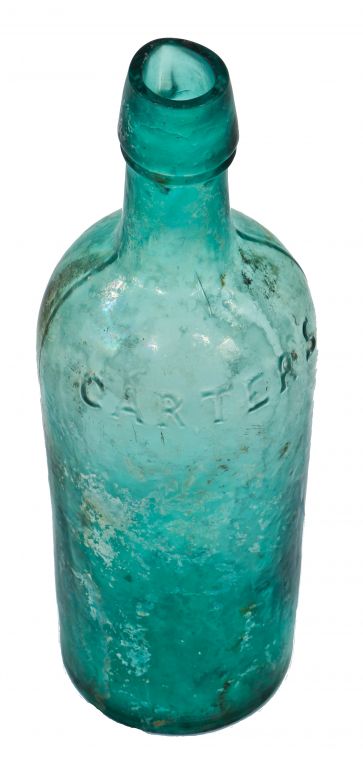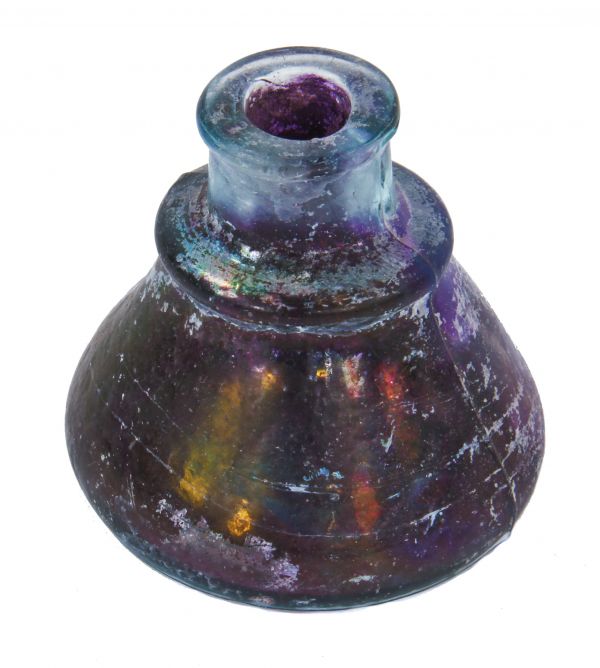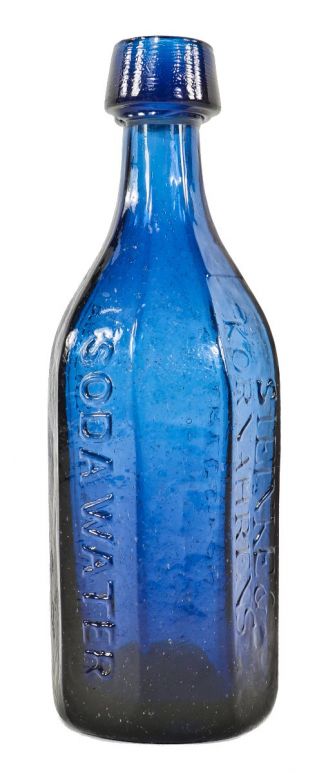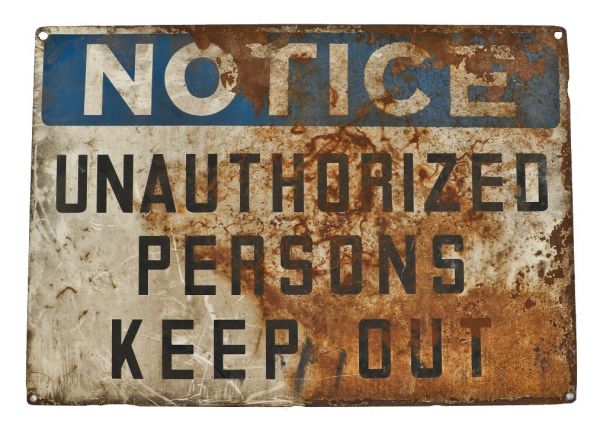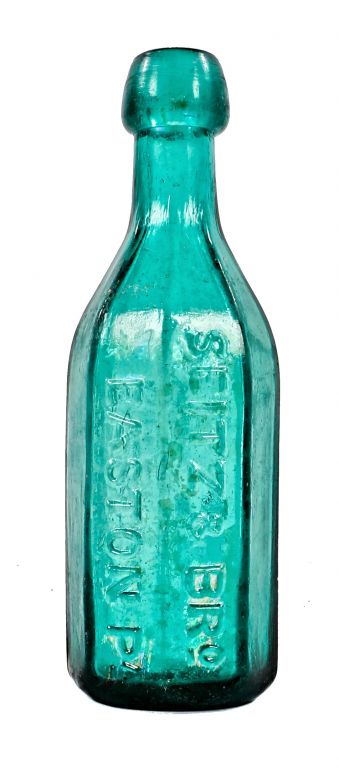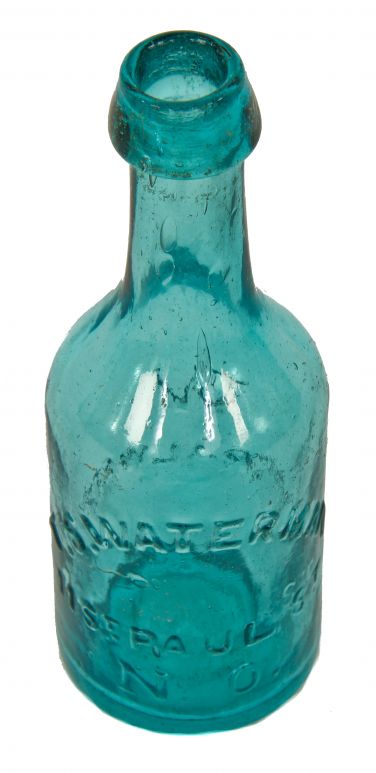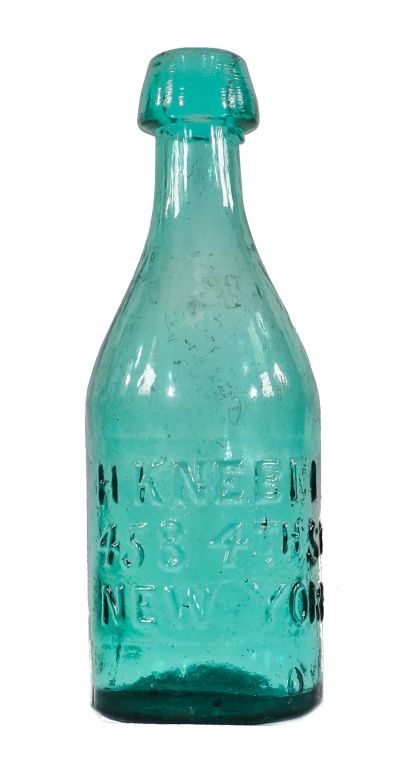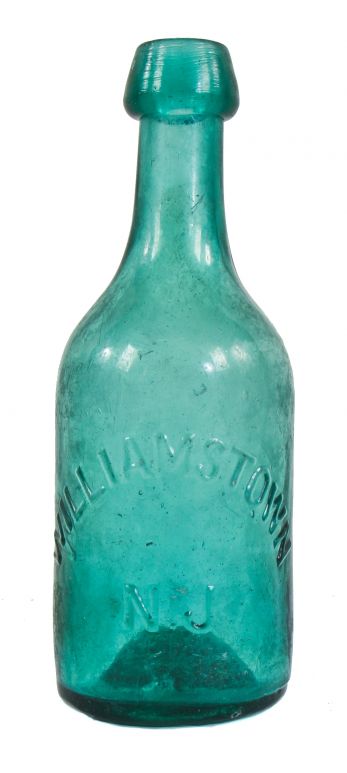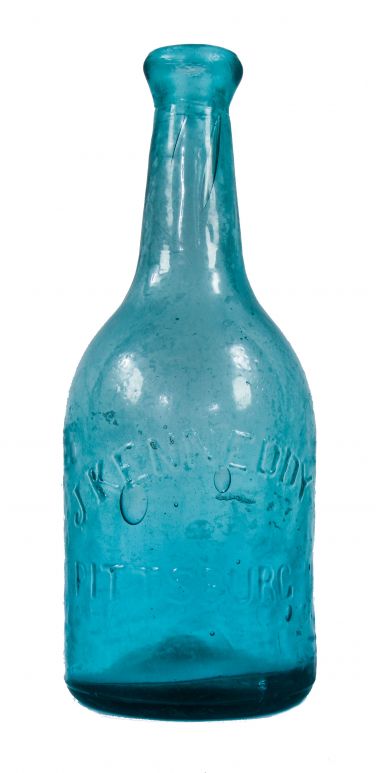single antique original late nineteenth century vibrantly colored teal "carter's" master ink bottle dug from a chicago area privy.
reference only
Out of stock
SKU
UR-23310-15
exact fabricator unknown
original and intact privy dug late nineteenth century vibrant light to medium teal master ink bottle fabricated for carter's ink company in boston, ma. the tall body rounds at the shoulders into a long neck and applied tapered collar with ring. the finish retains an indentation, likely from the original closure. the name "carter's" is embossed on the front shoulder. at the smooth base there is no maker's mark and seams evidence manufacture with two leaf mold. crudities are typical of its age and date of manufacture, including bubbles, whittling, and asymmetry. the dug bottle is intact, with no cracks or chips, but does exhibit some discoloration and haze. the william carter company, the forerunner of carter's ink, was founded in 1858 by boston stationer william carter who, in order to supplement his paper sales, had started repackaging other companies' inks and selling them under his own name. in 1860, william carter's brother, edward carter, joined the company and the firm became known as "william carter and bro." the civil war disrupted carter's primary ink supplier, so william carter obtained the use of its formulas on a royalty basis and started making his own inks and mucilage, which necessitated the move to a larger building. another brother, john h. carter, joined the company, which became "william carter & bros." in 1865 william's cousin, john w. carter, joined the enterprise and the name became "carter bros. & company." john w. carter focused his efforts on the ink part of the business which, along with the sales efforts of james p. dinsmore, resulted in such growth that the ink business was separated from the paper business and moved into its own quarters in 1868." the entire firm and both of its divisions and their separate buildings were destroyed the night of november 9, 1872, in what has been called the great boston fire of 1872. all that was left was the company's good will and its formulas. after the fire in 1872, john w. carter teamed up with james p. dinsmore to buy the ink division and start a new firm known as "carter, dinsmore and company." the new company thrived and by 1884 had become the largest ink producer in the world. contributing to this growth was john w. carter's belief in and commitment to research to develop new and better inks. james p. dinsmore retired in 1888, and john w. carter drowned in 1895, which created an organizational crisis in the unincorporated enterprise, which led to its incorporation later that year as "the carter's ink company. at the time of john w. carter's death, his son, richard b. carter was still studying at harvard, but after his graduation in 1898, he joined the company and after a period of learning the business became its head in 1903. under richard carter's leadership the company outgrew its boston location and in 1909 a new factory was built in cambridge and occupied in 1910. the building's huge "carter's inks" electric sign faced the charles river and was an area landmark for many years. measures 10 inches in height.
You Might Also Like
WORDLWIDE SHIPPING
If required, please contact an Urban Remains sales associate.
NEW PRODUCTS DAILY
Check back daily as we are constantly adding new products.
PREMIUM SUPPORT
We're here to help answer any question. Contact us anytime!
SALES & PROMOTIONS
Join our newsletter to get the latest information

